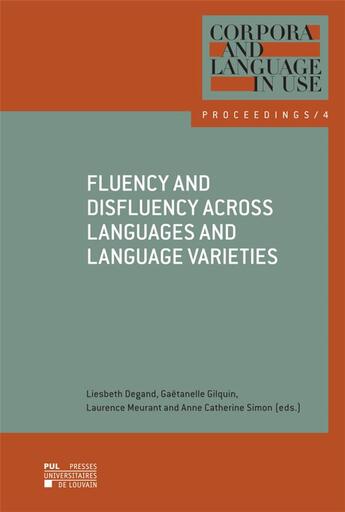-
Date de parution : 06/04/2019
-
Editeur :
Pu De Louvain
-
EAN : 9782875587695
-
Série :
(-)
-
Support :
Papier
Résumé:
Fluency and disfluency are characteristic of online language production and may be signalled by markers such as filled and unfilled pauses, discourse markers, repeats or self-repairs, which can be said to reflect ongoing mechanisms of processing and monitoring. The Fluency & Disfluency across... Voir plus
Fluency and disfluency are characteristic of online language production and may be signalled by markers such as filled and unfilled pauses, discourse markers, repeats or self-repairs, which can be said to reflect ongoing mechanisms of processing and monitoring. The Fluency & Disfluency across Languages and Language Varieties conference held at the University of Louvain in February 2017 marked the closing of a five-year research project dedicated to the multimodal and contrastive investigation of fluency and disfluency in (L1 and L2) English, French and French Belgian sign language, with a focus on variation according to language, speaker and genre. The closing conference was intended as an opportunity to further expand the range of languages, language varieties and genres studied from the (dis)fluency perspective. The selection of papers in this volume re ects the diversity of approaches aiming to uncover the ways in which fluency and disfluency are conceived in language production and comprehension and how they are signalled. Topics include methodological challenges in cross-linguistic (dis)fluency research, the role of contextual features in professional and non-professional settings, and the characteristics of fluency and disfluency in second language speech. Of particular importance in all contributions is the ambivalent role of pauses, discourse markers, repeats and other markers, which can be both a symptom of encoding difficulties and a sign that the speaker is trying to help the hearer decode the message. They should thus be interpreted in context to identify their contribution to fluency and/or disfluency, which can be viewed as two sides of the same coin.
Donner votre avis














